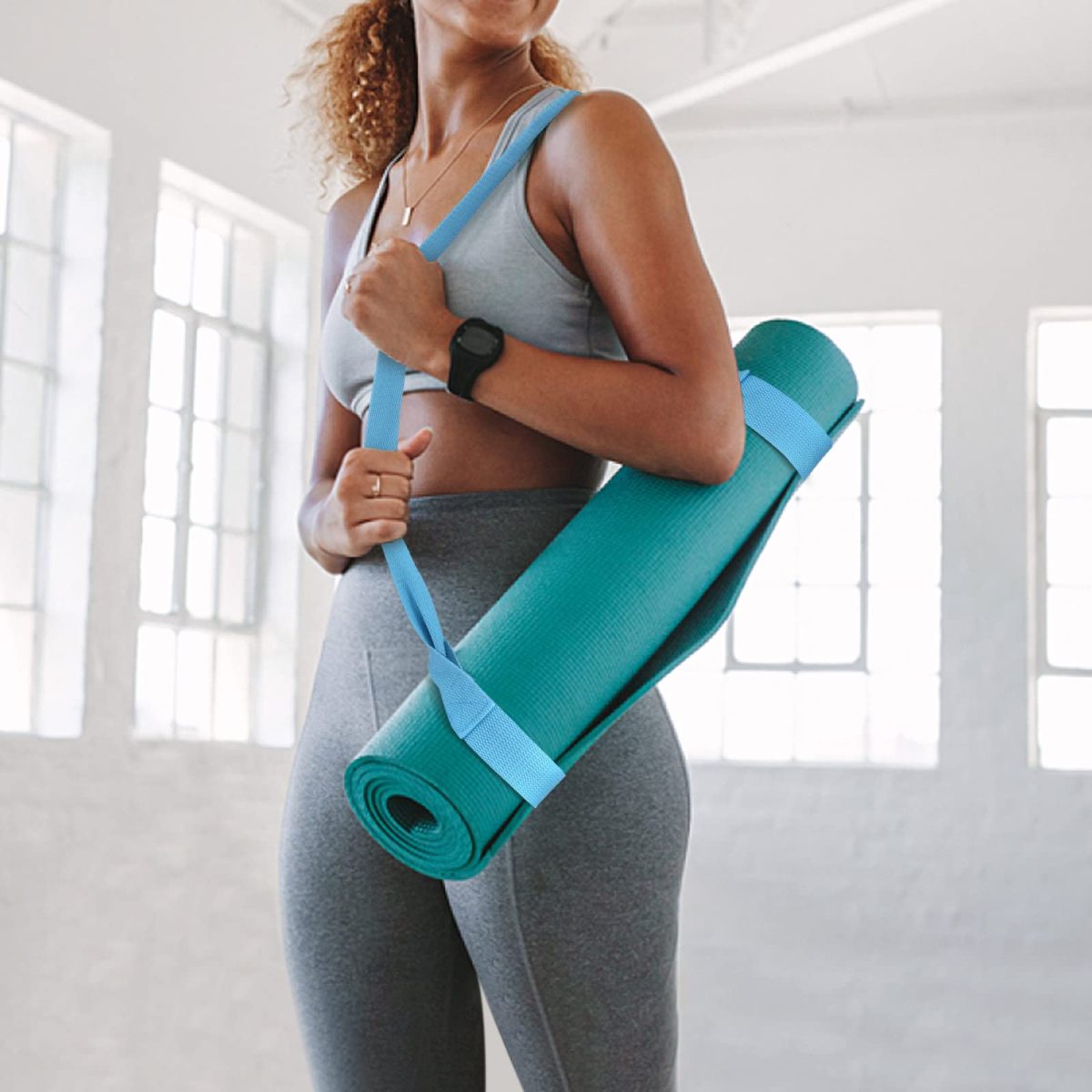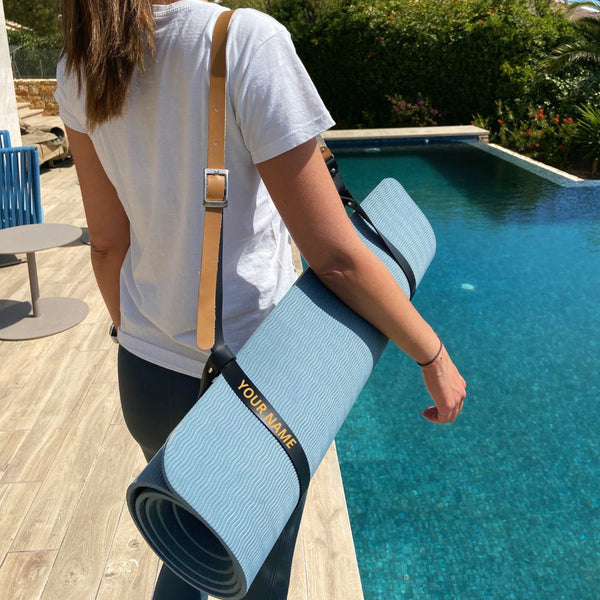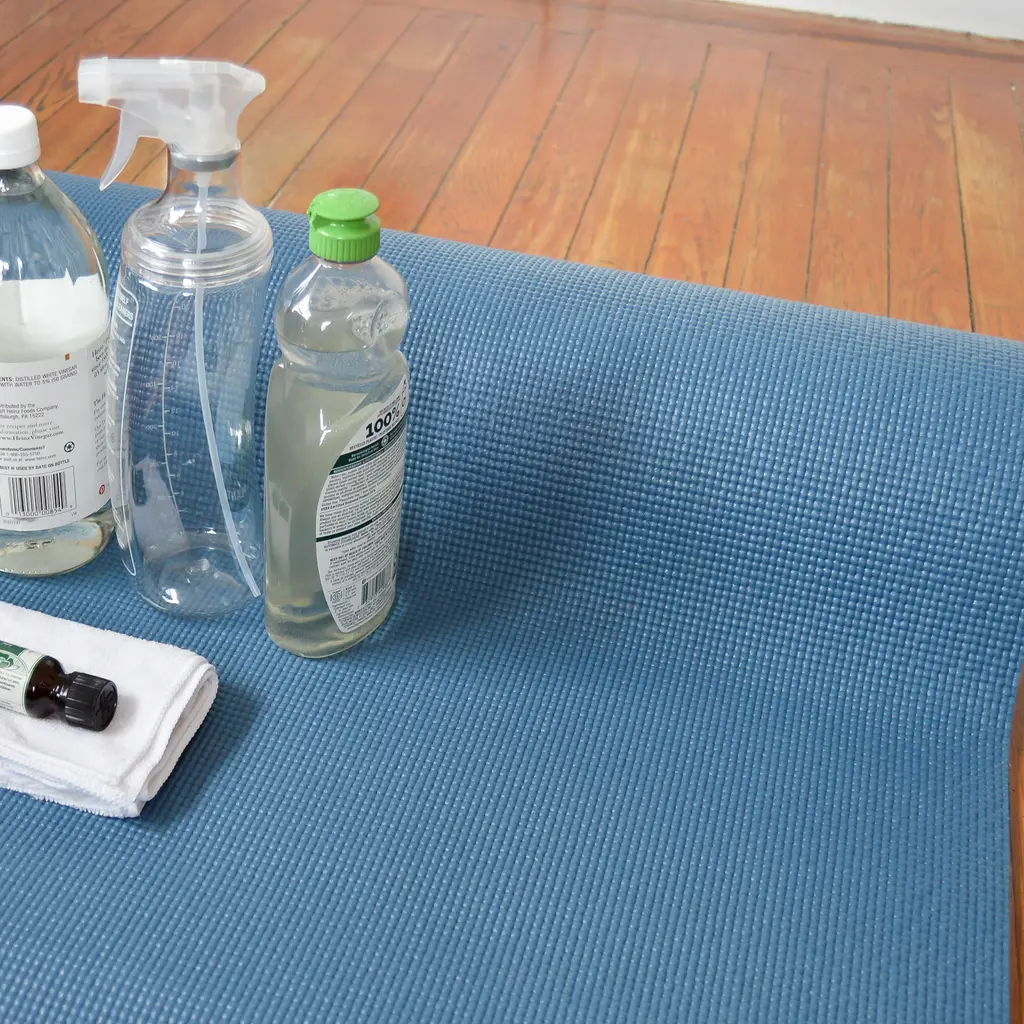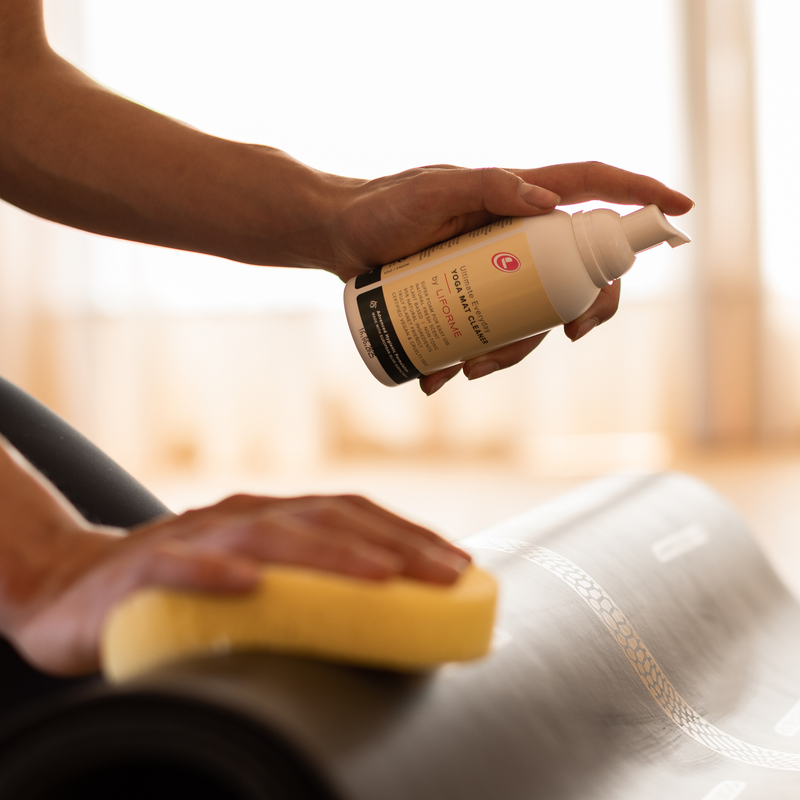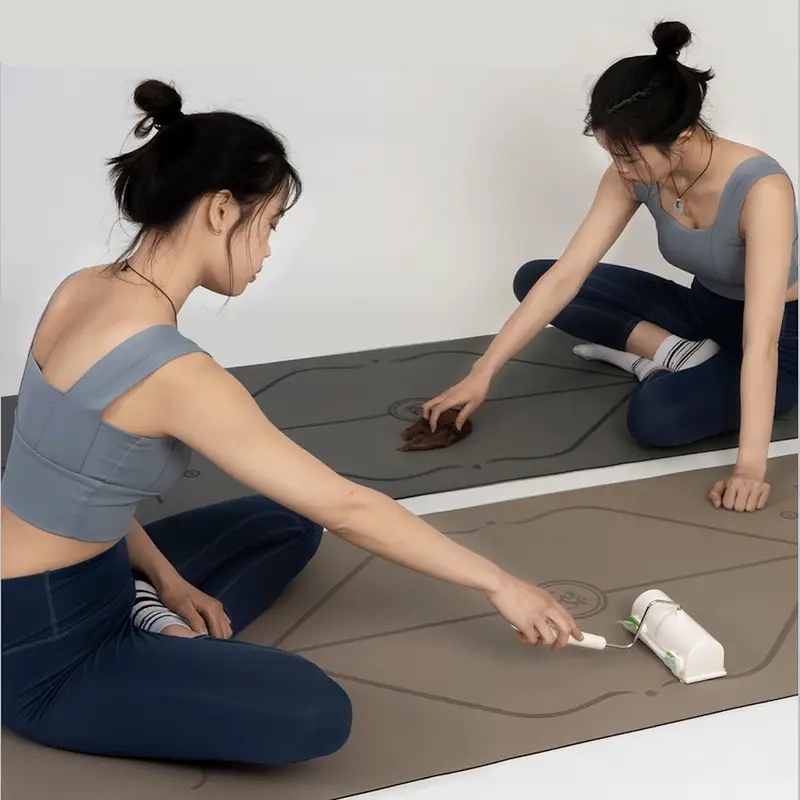Introduction to DIY Yoga Mat Carriers
Engaging in yoga offers numerous health benefits, but one minor challenge can be the transportation of the yoga mat. To practice yoga outdoors or attend classes, carrying a yoga mat is a must. However, not everyone has a specialized yoga bag, and at times these bags can be an added expense or a hassle. Here lies the beauty of a DIY no-sew yoga mat carrier: it’s a simple, cost-effective solution for conveniently transporting your mat.
How to carry a yoga mat? Having a custom-made sling ensures that you’re always ready for a yoga session, without the worry of leaving your mat behind. Plus, making your own carrier is not only easy on the wallet, but it also allows you to express your personal style and preference. And the best part is the simplicity; you can craft a functional and stylish yoga mat carrier with a few common household items, and avoid the complexities of sewing altogether. In this blog post, we will guide you through the process of creating your very own yoga mat sling, ensuring you’ll know how to carry a yoga mat comfortably and fashionably.
Essential Materials for Your No-Sew Yoga Mat Carrier
To create your no-sew yoga mat carrier, you’ll need a few basic items. Here’s what to gather:
- Scissors: Sharp scissors will cut materials clean and fast.
- Ribbon: Grab 2 yards of ?-inch wide ribbon for strength and ease of use.
- Yoga Mat: The central item for this DIY project.
For those who may have alternative items at home, consider:
- T-Shirt: An old t-shirt can substitute for ribbon. Cut it into strips.
When selecting materials, opt for durability and comfort. The ribbon is ideal as it’s sturdy and less stretchy, unlike t-shirt strips which can sag over time. If you use a t-shirt, wider strips may offer better support.
Remember, choosing the right materials ensures your carrier is both practical and long-lasting. Think about what you have available and what suits your needs before starting.
Step-by-Step Guide: Creating Your Yoga Mat Sling
Creating your no-sew yoga mat sling is quick and straightforward. Follow these steps to have your personal carrier ready in no time.
- Measure and Cut the Ribbon: Start by measuring a length of about 2 yards of ribbon. Use your scissors to cut this neatly.
- Wrap the Ribbon: Take one end of the ribbon and wrap it around your rolled-up yoga mat to size the loop.
- Form the Loop: With the top piece of ribbon, create a loop around the bottom piece. Check that both ends of the ribbon are parallel to each other.
- Secure the Loop: Now, tie a basic knot where you’ve formed the loop. It’s wise to tie a second one for added security.
- Leave Enough Space: The loop should be large enough to slide freely over the ribbon without coming loose.
- Create the Second Loop: Move to the other end of the mat and repeat these steps to form another loop.
- Adjust for Fit: The ribbon’s length between the two loops will vary depending on your body size. Adjust it so that when you wear the sling, the mat fits comfortably against your back.
- Test Your Sling: Slip the loops over both ends of your yoga mat, then put it over your shoulder like a bag to ensure it sits right.
Congratulations, you have created a simple, effective, and stylish way to carry your yoga mat. Remember, the keywords here are ‘no-sew’ and ‘ease.’ With just a bit of ribbon and a few knots, you’re all set for a hassle-free journey to your next yoga session.
Alternative Materials: Using T-Shirts or Fabric
If you don’t have ribbon on hand, there’s no need to worry. You can use alternative materials like an old t-shirt or fabric scraps. These materials are not only cost-effective but also allow for recycling, turning something old into a new, useful item.
Using an Old T-Shirt
To use a t-shirt as an alternative to ribbon, start by selecting a shirt that’s no longer in use. Once you have your t-shirt:
- Cut the T-Shirt: Lay the t-shirt flat and cut it into 1.5 to 3-inch wide strips. The width will affect the comfort and durability of your sling.
- Stretch the Strips: Pull on the strips to stretch them out. This gives them the elasticity they’ll need to hold the yoga mat securely.
- Knot the Strips: Just like with ribbon, tie the strips into loops at both ends of the mat. Make sure the knots are tight and secure.
- Check for Comfort: Since t-shirt material is stretchy, it may fit differently. Test it out to ensure it’s snug but comfortable against your body.
Using Fabric Scraps
If you have fabric scraps, you can craft a highly durable and attractive yoga mat carrier. Here’s what to do:
- Measure the Fabric: Choose a sturdy fabric and cut two pieces approximately 2 yards long and 3 inches wide.
- Fold and Iron: To make the edges neat, fold them inward and iron flat. This will give your sling a more finished look without sewing.
- Form the Loops: Tie each fabric strip into a loop on either end of your yoga mat, making sure they’re secure.
- Fit Test: Adjust the loops so they’re tight enough to hold the mat, but not too tight to slide off easily. Try wearing the sling to check the fit.
These alternatives are excellent for those who want to repurpose materials they already own. Whether you’re an eco-conscious yoga enthusiast or looking to save some money, using a t-shirt or fabric scraps is a creative way to carry a yoga mat.
Customizing Your Sling for Comfort and Convenience
To ensure your DIY yoga mat carrier suits your needs, customizing for comfort and convenience is key. Follow these tips to personalize your sling:
- Adjust the Length: The right length is vital for comfort. Make sure the ribbon or fabric strip is long enough to fit over your shoulder and around the mat without being too tight or too loose.
- Choose Soft Materials: Whether you opt for a ribbon, t-shirt strips, or fabric, select a material that feels gentle against the skin, especially if you carry it directly on your shoulder.
- Consider Width for Shoulder Comfort: A wider strap may provide more shoulder comfort. Especially if you walk long distances, a strap that distributes weight evenly will reduce strain.
- Add Padding: For extra comfort, especially with heavier mats, consider adding padding like a foam strip or folded fabric within the loops of the sling.
- Secure the Mat: Ensure your yoga mat is tightly rolled before placing it within the sling. A well-secured mat prevents slipping and makes carrying easier.
- Personalize with Color: Choose a color or pattern that reflects your style. It’s an easy way to spot your mat and adds a personalized touch.
By customizing your yoga mat carrier, you’ll enjoy more than just the practicality of having an easy way to carry your mat. You’ll also appreciate the added comfort, convenience, and a dash of personal style that comes with a carrier tailored to your preference.
Tips for Securing Your Yoga Mat Safely
Securing your yoga mat is crucial for safe transportation. Follow these easy tips to ensure your mat stays in place:
- Roll Tightly: Begin by tightly rolling your yoga mat. This prevents it from unraveling while you carry it.
- Check Knots: Ensure your knots are strong. Double knot your ribbon or fabric loops for extra security.
- Even Loops: Create loops of equal size. This helps in maintaining balance and ensures that the mat won’t tilt or slip.
- Test the Hold: Before heading out, place the mat on your shoulder and give it a gentle shake. This will confirm if everything is secure.
- Avoid Overstuffing: Do not force too many items under the strap, as it can loosen the hold.
- Regular Inspection: Over time, check the condition of the knots and material. Replace if you notice wear or stretching.
- Mindful Storage: Store your carrier and yoga mat in a dry, cool place to prevent damage.
By considering these simple tips, your DIY yoga mat carrier will hold up well and keep your mat secure, no matter where your yoga journey takes you.
Making Your Yoga Sling Stylish and Personal
Ensuring your DIY yoga mat carrier is not only functional but also stylish adds joy to your yoga practice. To personalize your carrier and make it stand out, you can put your creativity to good use. Here are some tips for adding that personal touch:
- Choose Vibrant Colors: Select ribbons or fabric in colors that you love. Bright, bold colors or patterns can make your sling pop and express your personality.
- Incorporate Patterns: If you have patterned t-shirts or fabric, use them to add an interesting design to your sling. Stripes, florals, or abstract prints could be eye-catching choices.
- Add Decorative Elements: Consider attaching charms, beads, or buttons to the sling. Ensure they’re securely fastened and won’t damage the mat.
- Embroidery or Painting: If you’re skilled with a needle or brush, embroider your initials or paint a design directly onto the fabric or ribbon. Use non-toxic, waterproof paints or threads.
- Mix and Match: Combine different materials or colors to create a unique patchwork effect. This works well if you’re using old t-shirts for your sling.
- Re-purpose Jewelry: Old necklaces or bracelets can be wrapped around the straps for an added flair. Just be sure they won’t snag on the mat or your clothing.
Remember, the aim is to make a yoga sling that’s a reflection of you and brings a smile to your face every time you head out to practice. By adding these personalized touches, your yoga mat carrier becomes more than just a convenient tool; it transforms into a statement of your individual style.
Caring for Your DIY Yoga Mat Carrier
Maintaining your DIY yoga mat carrier ensures longevity and cleanliness. Here are some care tips:
- Wash Regularly: Depending on the material, hand wash or machine wash your carrier. Use mild detergent and avoid bleach.
- Dry Properly: After washing, let it air dry completely. Don’t twist or wring the material.
- Inspect for Wear: Look for signs of fraying or weakening. Repair any damage promptly to prevent it from worsening.
- Store Correctly: Keep your carrier in a cool, dry place when not in use. This helps prevent mildew and fading.
- Avoid Direct Sunlight: Prolonged exposure to the sun can degrade fabrics. Store your carrier away from direct sunlight whenever possible.
- Follow Material Guidelines: Use washing and care instructions specific to the material you’ve chosen for your carrier.
Careful maintenance will extend the life of your carrier and keep it looking fresh for every yoga session. Remember, a clean and durable carrier is essential for ‘how to carry a yoga mat’ without hassle.
